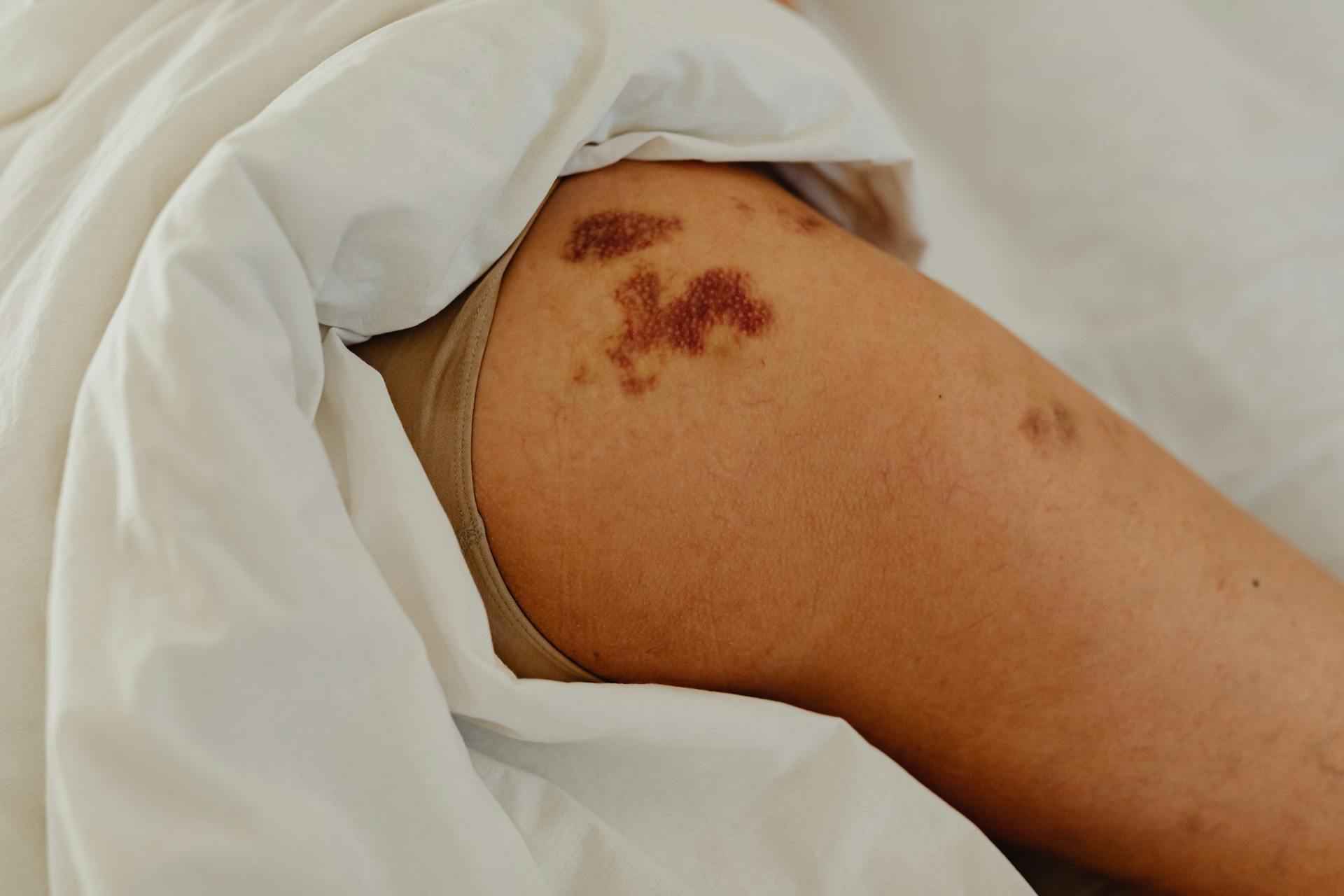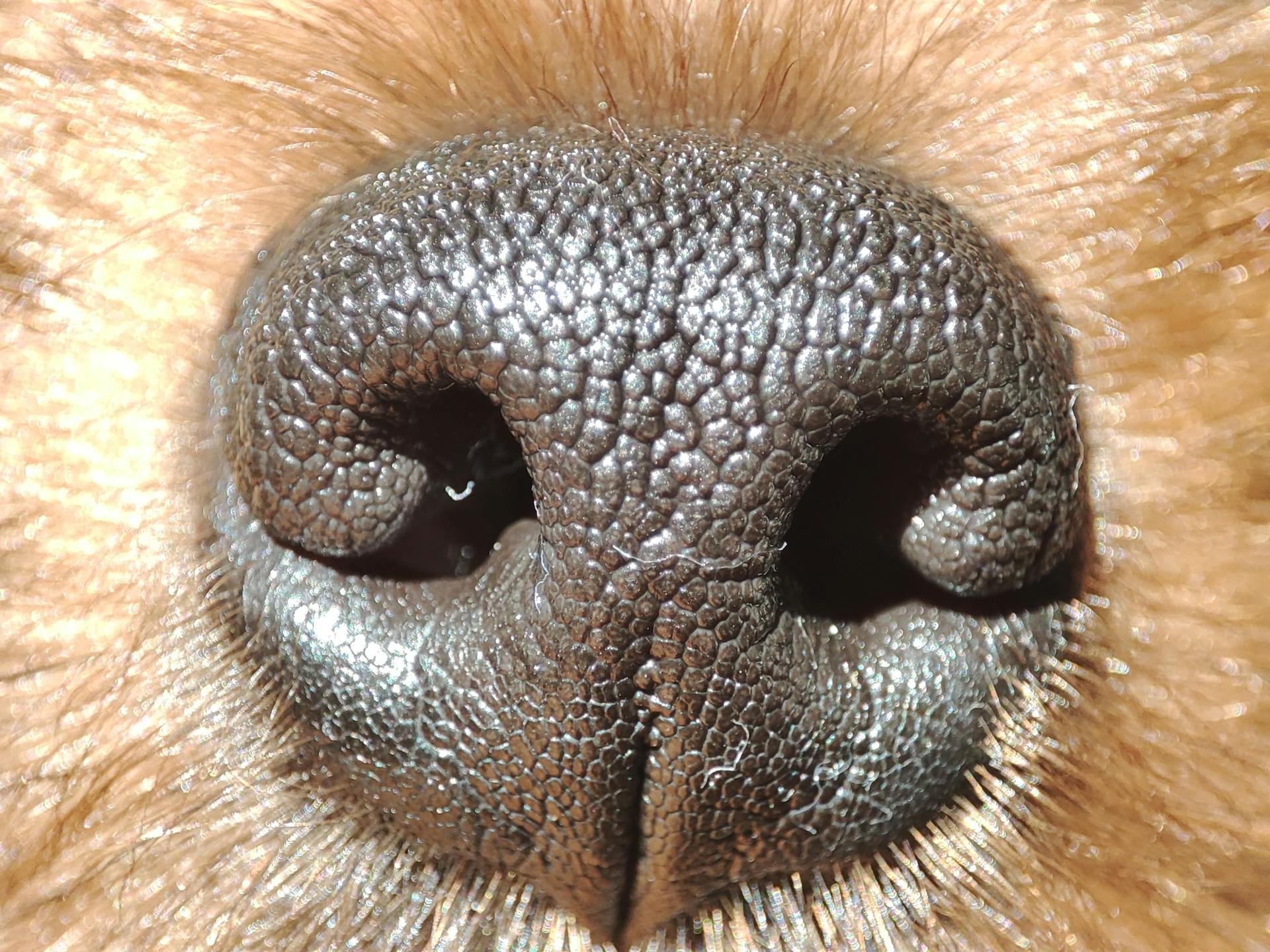
Dog mites can be a real nuisance for our furry friends. There are three main types of dog mites: Demodex, Sarcoptes, and Cheyletiella.
Demodex mites are the most common type of dog mite and are usually found in puppies. They're tiny, microscopic mites that live in the hair follicles and oil glands of dogs.
Sarcoptes mites, on the other hand, are the primary cause of scabies in dogs. They burrow into the skin, causing intense itching and discomfort.
Cheyletiella mites are also known as "walking dandruff" due to the way they move on the surface of a dog's skin, causing flakes and itching.
Types of Dog Mites
There are several types of dog mites, each with its own unique characteristics and effects on our furry friends. Cheyletiella mites, also known as walking dandruff mites, are highly contagious and can be transmitted to other pets and humans.
Sarcoptic mange mites, on the other hand, are responsible for the most common type of mange in dogs. They burrow into the skin, causing intense itching and hair loss. These mites can also infest humans, causing temporary infestations.
Take a look at this: Can Dogs Get Mites from Chickens?
Demodectic mange mites, also known as Demodex mites, live in the hair follicles and sebaceous glands of dogs. In healthy animals, they don't cause any issues, but in dogs with weakened immune systems, an overgrowth of these mites can occur, leading to demodectic mange.
Here are some of the most common types of dog mites:
It's worth noting that psoroptic mange mites, which occur in the ears of domestic and wild animals, are a type of ear mite that feeds on skin tissue, causing lesions and scabs.
Sarcoptic Mites
Sarcoptic mites are highly contagious parasites that burrow into a dog's skin to lay eggs and feed on tissue fluids. They cause intense itching and scratching, leading to hair loss, redness, crusty sores, and thickening of the skin.
Sarcoptic mites can infest dogs of any age, breed, or health, and their presence can be detected by the pinnal-pedal scratch test. This test involves gently rubbing a dog's ear to see if they try to scratch their hind leg. If they do, it's likely they have sarcoptic mange.
The symptoms of sarcoptic mange typically start on the ears, elbows, hocks, chest, and belly. If left untreated, the infestation can spread to other areas of the body, leading to open sores, scabs, and crusting or thickening of the skin.
Sarcoptic mites can be transmitted to humans, causing a temporary itchy rash on the forearms, thighs, and abdomen. However, this is not a long-term infestation and can be treated with topical creams or ointments.
Some common places where sarcoptic mites like to live on dogs include the ears, belly, armpits, and legs. If you suspect your dog has sarcoptic mange, it's essential to see a veterinarian for a formal diagnosis and treatment.
Here are some common symptoms of sarcoptic mange in dogs:
- Intense itching and scratching
- Hair loss, especially on the ears, elbows, hocks, chest, and belly
- Redness, crusty sores, and thickening of the skin
- Open sores or scabs
- Crusting or thickening of the skin
- Enlarged lymph nodes
- Loss of healthy muscle
- Secondary infections, which can lead to a strong, unpleasant odor
Sarcoptic mites are highly contagious and can be spread through contact with infested dogs, wildlife, or contaminated bedding or blankets.
Otodectic Mites
Otodectic Mites are commonly found in the ears of dogs and cats, feeding on earwax and skin debris within the ear canal.
Ear mite infestations can cause intense itchiness and discomfort for dogs, leading to excessive scratching or head shaking.
Dark discharge from the ears, resembling coffee grounds, is a common symptom of otodectic mange.
Redness, inflammation, and a foul odor from the ears can also be signs of an infestation.
In severe cases, secondary bacterial infections can develop.
Identifying the different types of skin mites that can affect dogs is essential for prompt treatment and prevention.
If you notice any symptoms mentioned above or suspect your dog has a skin mite infestation, it’s crucial to consult with a veterinarian for an accurate diagnosis and appropriate treatment plan.
Intriguing read: Types of Dog Skin Diseases with Pictures
Psoroptic Mites
Psoroptic mites are a type of ear mite that affects domestic and wild animals, particularly rabbits. They feed on skin tissue, causing irritation and lesions.
These mites don't burrow, but instead live under scabs in the ear canal, where they're protected from the environment and the animal's scratching. The scabs are a result of the lesions produced by the mites' feeding.
The life cycle of psoroptic mites is relatively short, taking only three weeks from egg to adult. The eggs hatch within four days, and the mites go through several stages before reaching adulthood.
Symptoms of psoroptic mite infestation start in the external ear canal, where loose crusts and a strong-smelling discharge become evident. The animal may exhibit characteristic behavior, such as scratching, shaking its head, losing its balance, and tensing its neck muscles.
Cheyletiella Mites
Cheyletiella mites are also known as walking dandruff mites due to their appearance on an infested dog's coat.
They feed on dead skin cells at the surface of the skin rather than burrowing into it, making them highly contagious and easily transmissible to other pets and humans.
Excessive flaking resembling dandruff, itching, redness, and hair loss are all symptoms of cheyletiellosis, a condition caused by these pesky mites.
Infested dogs may also experience a mild allergic reaction to the mites' saliva, leading to more severe itching.
These mites are larger compared to other mange-causing mites and can be seen with the naked eye.
They live in the top layer of dogs' skin, causing flaking, scaling, and itching, and are contagious and can be transmitted between animals and humans.
Causes and Symptoms
Dog mites are tiny parasites that can cause a range of problems for your furry friend. There are two main types of mange, caused by either sarcoptic or demodectic mites.
Sarcoptic mange is highly contagious and can be spread through contact with infected dogs, wildlife, or contaminated bedding. You can even catch it from your dog, so it's essential to take precautions.
Demodectic mange, on the other hand, is caused by mites that are naturally present in a dog's hair follicles. It's usually not contagious, but can still cause problems if left untreated.
Here are some common symptoms of mange in dogs:
- Hair Loss: Bald patches may appear on the dog's skin due to mange infestation.
- Skin Irritation and Redness: Mange-infected skin becomes inflamed, leading to redness and visible irritation.
- Excessive Scratching: Dogs with mange often scratch excessively, attempting to relieve their discomfort.
- Unpleasant Odor: Mange can produce a foul odor due to bacterial growth on the affected skin.
These symptoms can be painful and uncomfortable for your dog, so it's crucial to recognize the signs and seek veterinary care if you suspect mange.
Causes of Dog Mites
Dog mites are caused by tiny parasites that live on your dog's skin. There are two main types of mites that cause mange: sarcoptic and demodectic mites.
Sarcoptic mites are highly contagious and can be passed from one animal to another through direct contact or contaminated bedding. They can even infest humans, causing temporary skin infestations.
Demodectic mites, on the other hand, are naturally present in a dog's fur and are passed from mother to pup during the first few days of life. They usually don't cause problems unless the dog's immune system is weakened.
The sarcoptic mite's life cycle is completed within two to three weeks, during which time it lays up to three eggs a day in burrows in the skin. This causes intense itching and skin irritation, leading to hair loss and crusty scabs.
Demodectic mites, by contrast, live in hair follicles and sebaceous glands and complete their life cycle in three to four weeks. In healthy dogs, they usually cause only mild and temporary skin problems.
Certain breeds of dogs are more susceptible to demodectic mange, including Old English sheepdogs, collies, and German shepherds. These breeds may experience severe skin irritation and hair loss if they become infested with demodectic mites.
Curious to learn more? Check out: Can a Dog Flea Live in Human Hair
Signs & Symptoms

Sarcoptic mange in dogs is characterized by intense itching, which can lead to frantic scratching and chewing at the skin. This excessive scratching can result in secondary bacterial infections.
Hair loss is a common symptom of sarcoptic mange, particularly on the ears, elbows, hocks, chest, and belly. The skin may become red, inflamed, and crusty, with scabs forming due to the constant scratching.
Sarcoptic mange can also cause the skin to thicken and darken, making it look lichenified. In severe cases, the dog may develop a foul odor due to bacterial growth on the affected skin.
Dogs with mange may also experience weight loss, lack of appetite, and poor hearing and vision. If left untreated, mange can lead to exhaustion, dehydration, or secondary infections, which can be life-threatening.
Here are some common signs of mange to look out for:
- Itching and scratching
- Hair loss
- Redness and inflammation
- Crusts and scabs
- Unpleasant odor
- Weight loss and lack of appetite
- Poor hearing and vision
In addition to these symptoms, dogs with mange may also neglect their food and other forms of self-care, leading to a range of problems. If you suspect your dog has mange, it's essential to consult with a veterinarian for a formal diagnosis and treatment.
Is Contagious?

Mange can be quite contagious to both other pets and humans, especially if it's caused by sarcoptic mites.
Special precautions need to be taken to prevent the spread of mites to other inhabitants in the home, as they can easily infect other dogs and people.
It's crucial to isolate your dog from other pets until your dog is free of mites, which your veterinarian can help you determine.
Keep your dog off furniture and thoroughly clean all materials they've come into contact with, including their bed, your mattress, blankets, and carpet, to prevent re-infestation.
Treating and Preventing Dog Mites
If your dog has mange, it's essential to see a vet for an official diagnosis to determine the type and severity of the infestation. Mange is usually diagnosed by detecting the mites in the affected area, and a skin scrape is often done for this purpose.
Topical medications are commonly prescribed to target localized mange areas, and these medications often contain ingredients like imidacloprid and selamectin, which effectively kill mites and help alleviate itching and inflammation.
In more severe or widespread cases of mange, oral medications or injectable medications may be necessary, and these medications work systemically to kill mites throughout the body. It's also important to note that mange treatment requires a tailored approach, and veterinary dermatology guidance is crucial.
To prevent mange, using isoxazoline medications can be beneficial, as they not only treat mange but also help prevent it. These medications are often used in monthly flea and tick control products.
To effectively treat and prevent mange, it's crucial to follow your veterinarian's care instructions, which may include medication administration and hygiene practices. Regular veterinary checkups are also essential for monitoring your dog's health and detecting early signs of mange.
Here are some key steps to take if your dog has mange:
- Isolate your dog to prevent the spread of mange to non-infested individuals
- Clean or replace your dog's bedding, collar, and other gear
- Avoid breeding dogs with demodectic mange
- Keep other animals away from a dog with sarcoptic mange
- Keep your dog away from wild animals or unknown dogs
By following these steps and working closely with your veterinarian, you can effectively treat and prevent mange in your dog.
Frequently Asked Questions
Can humans get mites from dogs?
Yes, humans can get mites from dogs through close contact, leading to intense itching and irritation. This occurs when the mites and their waste products trigger a hypersensitivity reaction in humans.
Sources
- https://edis.ifas.ufl.edu/publication/IN953
- https://www.ask.com/lifestyle/different-types-skin-mites-dogs-visual-reference-guide
- https://www.dailypaws.com/dogs-puppies/health-care/dog-conditions/mange-in-dogs
- https://www.wikihow.com/Identify-Mange-on-Dogs
- https://bettervet.com/resources/pet-diseases/mange-in-dogs
Featured Images: pexels.com


